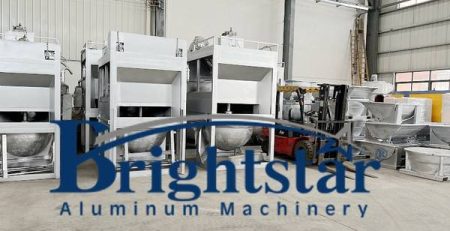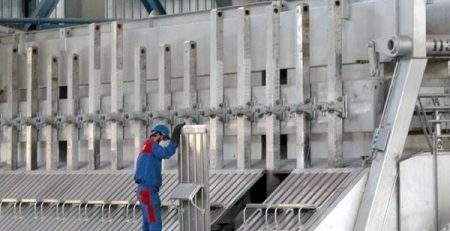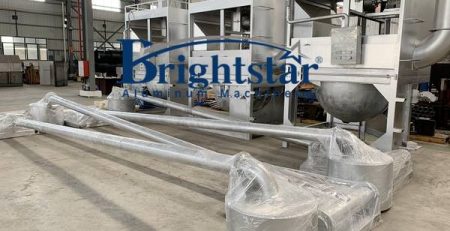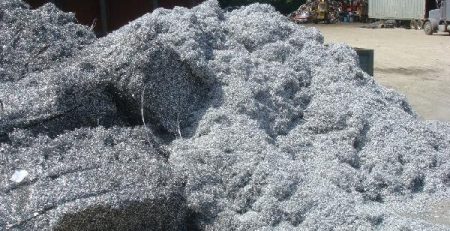How does aluminum rod continuous casting and rolling line work?
How does aluminum rod continuous casting and rolling line work?
How does aluminum rod continuous casting and rolling line work?
An aluminum rod continuous casting and rolling line is an integrated production system that converts molten aluminum into aluminum rods through a continuous process.
This system combines continuous casting and rolling in one line, optimizing production efficiency and ensuring high-quality output.
Here’s how it works:
Key Components and Process Steps:
1. Melting Furnace:
Function: Aluminum scrap or ingots are melted in a furnace.
Process: The furnace heats the aluminum to its melting point, creating molten aluminum.
2. Holding Furnace:
Function: The molten aluminum is transferred to a holding furnace.
Process: This furnace maintains the aluminum at a constant temperature and removes impurities, ensuring consistent quality for the casting process.
3. Launder System:
Function: Molten aluminum is transported from the holding furnace to the casting machine through a launder system.
Process: The launder system is typically lined with refractory material to keep the molten aluminum at the desired temperature and prevent contamination.
4. Continuous Casting Machine:
Function: The molten aluminum is cast into a solid form.
Process: The aluminum flows into a casting mold where it cools and solidifies into a continuous cast bar (billet or slab).
5. Rolling Mill:
Function: The cast bar is immediately fed into a rolling mill.
Process: The rolling mill consists of multiple stands of rollers that progressively reduce the cross-sectional area of the cast bar, elongating it into a wire rod. This process involves several passes through different rollers, each time reducing the thickness and increasing the length of the material.
6. Cooling System:
Function: After rolling, the aluminum wire rod is cooled.
Process: The rod is passed through a cooling system (often a series of water sprays or air jets) to bring it down to ambient temperature. Proper cooling is critical to achieving the desired mechanical properties.
7. Coiling System:
Function: The finished wire rod is coiled for easy handling and storage.
Process: The wire rod is wound into large coils using a coiling machine. These coils are then ready for further processing or shipping.
Features and Advantages:
High Efficiency: The continuous casting and rolling process eliminates the need for intermediate reheating, reducing energy consumption and increasing production speed.
Quality Control: Continuous casting ensures a consistent grain structure and reduces defects such as segregation and porosity, leading to higher quality wire rods.
Cost Savings: The integrated process reduces labor, energy, and material handling costs, making it more cost-effective compared to traditional batch processing methods.
Compact Layout: Combining casting and rolling in a single line minimizes space requirements and simplifies the production layout.
Environmental Benefits: Reduced energy consumption and lower emissions contribute to a more environmentally friendly production process.
Applications:
Electrical Wiring: Aluminum wire rods are used extensively in electrical wiring due to their good conductivity and cost-effectiveness.
Automotive Industry: Used in the production of electrical components and wiring harnesses for vehicles.
Construction: Used in building construction for power distribution and electrical infrastructure.
Aerospace and Defense: High-quality aluminum wire rods are used in critical aerospace applications where performance and reliability are paramount.
The aluminum wire rod continuous casting and rolling line is an advanced production system designed to produce high-quality wire rods efficiently and cost-effectively, meeting the needs of various industrial applications.
What is aluminum rod continuous casting and rolling line used for?
An aluminum rod continuous casting and rolling line is used to produce aluminum rods from molten aluminum through an integrated and continuous process.
The wire rods produced are essential raw materials for a wide range of industrial applications.
Here are the primary uses and applications:
Uses and Applications:
1. Electrical Conductors:
Power Cables: Aluminum wire rods are widely used to manufacture electrical conductors for power transmission and distribution cables due to their excellent conductivity, lightweight nature, and cost-effectiveness.
Overhead Transmission Lines: They are used in overhead power transmission lines where the lightweight of aluminum reduces the load on the supporting structures.
2. Building and Construction:
Wiring: Aluminum wire rods are used to produce electrical wiring for residential, commercial, and industrial buildings.
Structural Components: They are used in various structural applications where lightweight and corrosion resistance are essential, such as in window frames and curtain walls.
3. Automotive Industry:
Wiring Harnesses: Aluminum wire rods are used to manufacture wiring harnesses for vehicles, offering a balance of good conductivity and lightweight, which improves fuel efficiency.
Components: Used in the production of various electrical and structural components in automobiles.
4. Aerospace and Defense:
Aircraft Wiring: Aluminum wire rods are used in the aerospace industry for aircraft wiring due to their lightweight and reliable conductivity.
Defense Applications: They are also used in various defense applications where performance and reliability are critical.
5. Consumer Electronics:
Cables and Connectors: Aluminum wire rods are used in the manufacture of cables and connectors for consumer electronics such as smartphones, laptops, and other gadgets.
Circuitry: Used in electronic circuit boards and other components where lightweight and conductivity are beneficial.
6. Renewable Energy:
Solar Panels: Aluminum wire rods are used in the production of wiring for solar panels and other renewable energy systems, where their lightweight and corrosion resistance are advantageous.
Wind Turbines: Used in electrical components of wind turbines.
7. Industrial Machinery:
Motor Windings: Used in motor windings and other electrical machinery components.
Transformers: Used in the production of transformer windings due to their good electrical properties.
8. Packaging:
Metal Cans and Foils: In some specialized applications, aluminum wire rods are drawn into finer wires or processed further for use in packaging materials like metal cans and foils.
Key Benefits:
Cost-Effectiveness: Aluminum is less expensive than copper, making aluminum wire rods a cost-effective alternative for many applications.
Lightweight: Aluminum’s lightweight nature is crucial in industries like automotive and aerospace, where reducing weight can lead to better fuel efficiency and performance.
Corrosion Resistance: Aluminum wire rods offer excellent resistance to corrosion, making them suitable for outdoor and marine applications.
Good Conductivity: While not as conductive as copper, aluminum offers sufficient electrical conductivity for many applications, especially where weight reduction is a priority.
Conclusion:
Aluminum rod continuous casting and rolling lines are vital in producing high-quality aluminum rods used across various industries, including electrical, automotive, aerospace, and construction.
The process ensures efficiency, cost-effectiveness, and the production of wire rods that meet stringent quality standards, making them suitable for a wide range of demanding applications.












